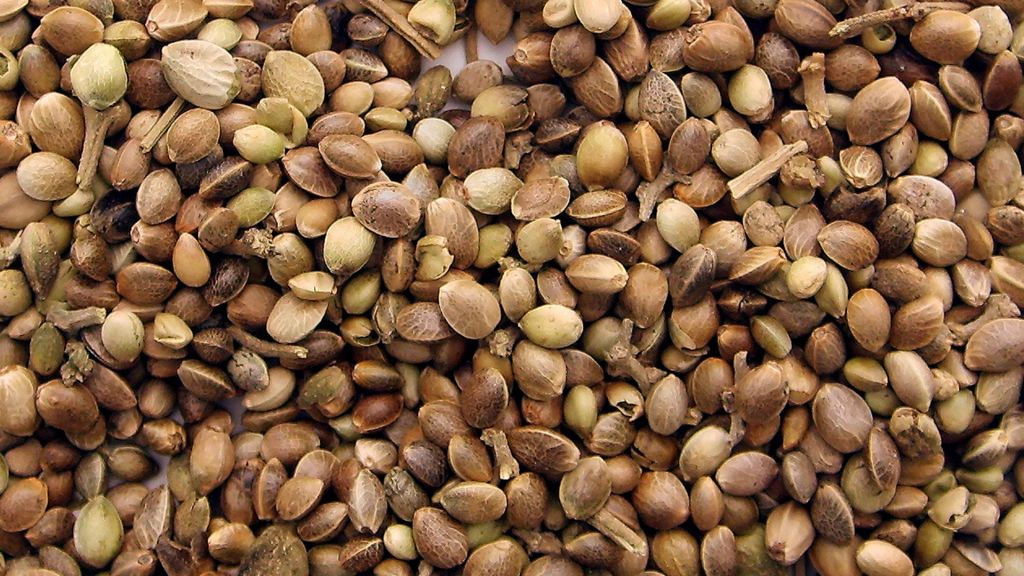
In the Independent Lens doc SEED: The Untold Story, biodiversity evangelists travel the globe in search of as many seed varieties as they can bank in their vaults before they disappear. As we learn in the film, 94% of agricultural seed varieties have vanished over the last century.
The critics of industrial farming practices featured in SEED attribute variety loss to genetic modification and the cultivation of monocrops. With a growing number of U.S. states relaxing cannabis prohibitions, what will become of the world’s most popular narcotic seeds as the marijuana growing industry expands? Spare a moment this 4/20 to consider the weed seed.
From 4/20 to 24/7
With the legalization of marijuana reaching an eighth state this year, entrepreneurs are embarking on a “green rush” around 4/20. The holiday that began as a counterculture movement is now a $40 billion dollar business. In Colorado alone, marijuana sales will top $5 million a day between April 15th and the 20th.
“Our perspective is 4/20 is a real holiday — no smaller than St. Patrick’s Day or Halloween,” Eddie Miller, CEO of Invest in Cannabis, an aspiring Alibaba platform for the cannabis industry, told Vox in 2014.
The Silicon Valley of weed, better known as The Emerald Triangle, which grows its plants au naturel in the good ol’ outdoors and has for years been the epicenter of weed production in the US, is now competing with corporate growers pursuing a far more scalable and efficient farming process: cloning.
IT’S ALIVE (or rather… IT’S LIT)
Back in the 1990s, Scottish scientists caused some freak-outs when they cloned Dolly the sheep. But cloning has been a part of nature through asexual reproduction since the genesis of life, prevalent among grasses, onions, potatoes, and strawberries, bacteria and more. There’s even a reference to cloning in The Bible (Romans 11:17, 24).
Among horticulturists, cloning is often preferred to sowing fertilized seeds and waiting for genetically diverse plants to germinate — the (lengthy) process of a plant emerging from the dormancy of said fertilized seeds. With the domestication of vegetables dating back to 5,000 B.C., it was only a matter of time before cloning was picked up by the cannabis industry.
“Cloning is crucial for [cannabis] growers looking for consistency in their genetics,” says veteran grower Allie Beckett, author of As the Grass Grows. “Seeds may be more vigorous growth-wise, but they are often unreliable in terms of phenotypes [physiological traits]. Cloning guarantees the preservation of your genetics — it can be a finicky process, but it is absolutely a necessary one.”
Growers are becoming expert breeders thanks to cloning, creating varieties of strains by identifying which of them have the most favorable cannabinoid composition.
From there, they snip branches off the “mother” plants, plop them into a pot, and wait for them to grow into, well, pot, eliminating the entire process of seed germination and the amount of care needed to make sure the seeds get to that point. The mother plants’ severed limbs form roots.
Since child plants have the same cannabinoid component levels as their mothers, a clone will bear the exact same ratio of THC (the psychoactive compound that determines the type of high you get) to CBD (the the non-psychoactive compound with medicinal applications like anti-inflammation, anxiety reduction, memory boosting, and more).
“Patients wanted/needed a consistent flower that could help in the same fashion every time they used it,” Colorado dispensary owner Kris Fowlkes told Kindland in a seeds versus clones debate last year. “This spurred us to begin selecting our best phenotype from the strains we grew from and maintain that one expression of the strain so that our patients knew exactly what to expect every time they saw that strain … Being able to trade and breed the best specimens without the hassle of propagating hundreds of seeds sped up the process substantially.”
Growers expend considerable effort balancing THC and CBD to produce a variety of highs for different recreational and medical uses.

Pineapple Express (the labradoodle of marijuana), a Sativa-dominant hybrid strain made from Hawaiian Sativa (labrador) and Trainwreck Sativa-dominant hybrid (poodle), is a popular strain growers frequently clone for its tropical fruit smell and high THC that produces a long lasting, energetic high.
Drawbacks of Cloning
Because speed to market and consistency demand stable growing conditions (on top of the punitive risk of growing in regions with legal restrictions), operations remain largely indoors, which introduces significant environmental impact.
For every pound of marijuana grown indoors (22 million every year in the U.S.), 4,600 pounds of carbon dioxide is released into the atmosphere. That’s equivalent to 3 million cars. Indoor growing operations consume 60 million gallons of water a day, the same amount of energy as 29 refrigerators per cloning module. Nationwide, this business as a whole uses the power of seven large power plants, about the energy it would take to power 1.7 million homes. If growers are careless and snip branches off a mother plant that has a virus, the time, energy, space, and water put towards that genet, e.g. a family of clones all living in proximity to the original mother plant, are ultimately wasted. While clones root from stems, seeds produce a tap root, which is more resilient and less susceptible to infection.
But what about the end product?
Back to Kris Fowlkes via the Kindland debate: “I have never been able to tell if a bud is from seed or clone.”


